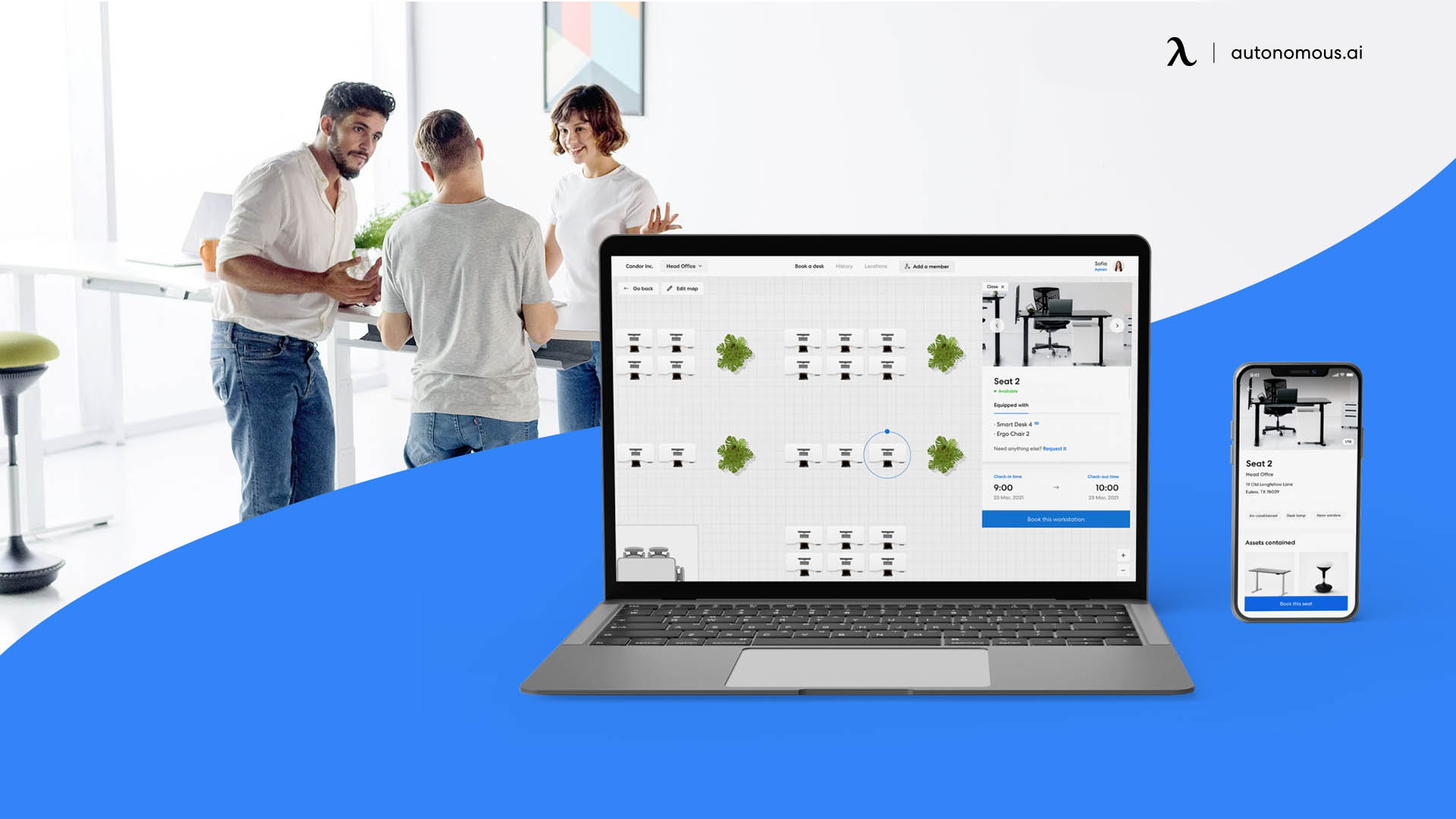
What Is the New Normal Hybrid Work Week Schedule Like?
Hybrid working has slowly gained popularity among many workplaces worldwide. While it still hasn’t gained the trust of some managers, this work mode has proven to be effective and reliable for some people.
The general hybrid work week has changed significantly over the past years. However, keep in mind that the point of hybrid work schedules is that you can be flexible with how you choose to work.
If you’re trying to implement a hybrid work model at your office, there are some things you must keep in mind before making any decisions for your employees. On this page, we’re going to take a look at what options you currently have to set up your hybrid work schedule during the week.
What Is a Hybrid Work Model?

In essence, hybrid work consists of an arrangement where employees can be flexible with the location where they work. Thus, in other words, they can work both onsite or offsite, depending on the company’s arrangements and the employees’ preferences.
Hybrid work models became popular recently due to the pandemic. A couple of years ago, most businesses worked permanently onsite or remotely, not both. However, this working model had a lot of success for many businesses worldwide, so the managers for these businesses are considering (or have already implemented) a permanent, hybrid work schedule).
Big corporations, such as Google and Facebook, have already announced that they’re planning to stick with hybrid working with long-term hybrid work week even after the pandemic ends; this means we’re shifting toward the future of work, which includes both remote and onsite schedules.
The point of a hybrid work environment is to increase productivity among all employees. It’s important to note that some people have had a hard time adjusting to the post-pandemic reality, making it harder to come back to the traditional work schedules their work had before.
On the other hand, some people decided to stay with remote working because they found it much more comfortable for their daily life. Keep in mind that a hybrid work model doesn’t necessarily mean that everyone is going to choose onsite or remote working; each person has particular needs, and they may choose the option that best fits their needs.
Finally, hybrid working has helped improve job satisfaction and mental health among many workers. Having the option to alternate between onsite working and remote working has allowed some people to work with a clearer mind and focus.
Overall, hybrid working came to stay, and it’s normal for many businesses to try and implement this business model. As long as you make a good hybrid work week schedule, you’re good to go, and your employees are going to thank you for it.
Pros and Cons of Hybrid Work Models
Pros and Cons of Hybrid Work Models

They promote job satisfaction in general.
They boost productivity.
They allow employees to be more flexible with their work.
Cost reductions.

Some industries cannot benefit from remote working.
The customer experience isn’t as smooth.
Some employees may have a hard time getting used to it.
Is Your Company Suitable for a Hybrid Work Schedule?

Hybrid working may look simple but it involves several changes you must keep in mind. In essence, you must implement hybrid work policies to fit both onsite and remote workers. However, it’s important to note that not all companies may benefit from this working model. If you’re planning on implementing this hybrid work schedule, here are some things you must consider:
Viability
The first question you must ask yourself is whether a hybrid work week schedule can work with your company. In other words, you must determine if you can have office employees and remote employees at the same time and achieve your company’s goals.
Some companies rely 100% on office working since it allows everyone to achieve their goals faster. On the other hand, other companies prefer hybrid remote working since they have enough resources to make it work. In essence, it depends on what you want to achieve with this new work model and whether you can make it work with the resources you currently have.
Communication

Communication is key if you want a hybrid week schedule. Considering that you’re going to have both onsite workers and remote workers, you must ensure you can provide everyone with proper communication channels where they can get the information they need.
It may be challenging at first to adapt to different communication strategies in some first hybrid work weeks. However, if the company promotes open and transparent communication among all employees, it may work. Remote employees often get affected by communication problems, so it’s important that you can provide the resources for them to communicate equally.
Technology

Finally, you must ensure your company has all the required resources to start working with a hybrid model schedule. In essence, you must prepare the right hybrid office environment so that everyone is comfortable enough for their working sessions.
Additionally, you must prepare more effective communication channels so that everyone can get the company’s goals done at the planned time. Thankfully, there are many resources you can use to make your hybrid week schedule work; all it takes is deeper organization and collaboration from all managers and employees.
If you don’t work with the right hybrid work technology and tools, you may be exposed to poor communication, employee dissatisfaction, and more.
How Companies Can Implement a New Work Schedule for an Employee?
There are some vital steps you must take as a manager if you want to successfully implement an effective hybrid work week schedule. We’re going to go over all the factors you must consider before creating your hybrid work strategy.
Health Concerns

While employee health and safety have always been a priority, it has become much more important due to the pandemic. If you plan to go into a hybrid model schedule, you must determine whether your office is prepared to receive some of your employees again.
Generally speaking, you must create new safety protocols to keep all offices clean and disinfected. It’s also a great idea to prepare your meeting rooms accordingly so that everyone can sit comfortably without being too close to other coworkers.
Finally, you must see if the current situation requires you to update the company’s sick leave policy.
Equity

Remote work and onsite work aren’t the same. It can be challenging for a company to keep equal working conditions for both of these working models due to their nature. However, you must always ensure all employees enjoy the same benefits, regardless of where they’re working.
In essence, you must make a plan where all employees are guaranteed equal working conditions in the hybrid office. If you have some employees working remotely, you must determine whether they have enough resources to work comfortably or not.
On the other hand, onsite workers may have easier access to the company’s information. In those cases, you must take the right steps to ensure remote workers also have easy access to all the information they need; this can promote better communication and teamwork.
Overall, you cannot allow your current work policies to be biased toward one work model. If you want to make your hybrid work model succeed, you must work hard to ensure everyone gets the same opportunities to achieve equal working performance.
Logistics

Logistics are the foundation of every hybrid work week schedule. As mentioned before, you must prepare your company for both onsite and remote workers, and that involves assessing many logistic factors.
First, you must evaluate which departments of your company can be remote onsite and remotely. Remember that you must ensure equal working conditions for everyone. If you know how each department of your company operates, you’re going to make the required changes quickly and achieve a more flexible workspace.
After you’ve assessed all those terms, you can begin choosing the hybrid work schedule of your preference. Remember there are many you can choose, so make sure to pick the one that fits your company’s goals the best.
Different Hybrid Model Schedules
Currently, there have been several new hybrid work schedules created to make things easier for managers and employees. Make sure to review each of these schedules carefully and choose one that best adapts to your company’s needs.
Staggered Schedule

On a staggered hybrid model schedule, employees have set days where they must work either onsite or remotely. However, employees don’t share the same entry/exit times. If you work in a company with a significant number of employees, this option may work for you.
Cohort Schedule
This is one of the most basic hybrid week schedules on the list. Here, you set a fixed schedule for all employees and adjust it based on how they perform over time. The cohort hybrid work week is much easier to manage, so if you want to take things easy at first, you may try this method.
Flexible Schedule

Flexible schedules are another popular hybrid week schedule, but they take a bit more time to prepare. In this case, the schedule can be managed by either the manager or the employee.
If you’re the one managing the schedules, you must choose who works remotely and who works in the office depending on the current company conditions. While this is more convenient, it may be challenging to keep track of everything at first.
On the other hand, if you let your employees manage their hybrid work week, you must ensure everyone communicates correctly so that the hybrid work schedule benefits the company in general. If managers don’t continually monitor this working schedule, you may have many communication issues in the future and decrease work productivity.
Alternate Hybrid Schedule
Here, managers allow their employees to work in the office for a particular set of days (typically four days a week) and leave the rest of the hybrid work week for remote work. Alternate schedules are one of the most comfortable ones for everyone, so consider taking them if you have the resources.
Permanent Remote Schedule
Some businesses have been switching to permanent WFH (work from home) schedules. If you consider your company can benefit from this hybrid model schedule, you may set it.
What Can an Employee Do to Adapt to a New Work Schedule?

A key factor in making a hybrid office space work is allowing your employees to adapt to the new work circumstances. Remember that adapting to a hybrid model doesn’t happen overnight; it’s a process that may take a few days in the hybrid work week so that everyone feels more comfortable.
In essence, your goal is to make your employees feel as comfortable as possible with the changes. You may achieve this goal by being as transparent as possible with everything that’s happening. As long as you communicate with your employees correctly, you’re going to ensure everyone knows what to do.
Additionally, remember to ask for your employees’ input in some areas. Knowing what your employees need to work better may also help you adjust some of your decisions to fit both the company’s and the employees’ needs.
It’s vital for managers to encourage their employees to ask as many questions as they consider appropriate. When it comes to hybrid work models, it’s easy to get confused or scared for every change. By allowing employees to become part of the changing process of the work model, you allow them to get familiarized with everything faster.
Finally, you must ensure you’re preparing the right return to work strategy. If you’re unsure of where to start, using a change management service can help you. The Autonomous Hybrid Office can be an excellent way to prepare your office for these big changes without losing too much time.
In essence, Autonomous’ Hybrid Office handles everything from design, delivery, setup, and support of your hybrid office. Thanks to this hybrid software, you can empower your employees and optimize your workflow with a proper hybrid work week in ways you may have never imagined!
Bottom Line
As mentioned before, one of the most remarkable aspects of a hybrid work week schedule is that there are many options for your company. As long as you prepare yourself and your employees for these changes correctly, you’re going to ensure a much more friendly environment where everyone can work to their maximum potential.
Get exclusive rewards
for your first Autonomous blog subscription.
You May Also Like





-7512dd9e-3510-42ed-92df-b8d735ea14ce.svg)


